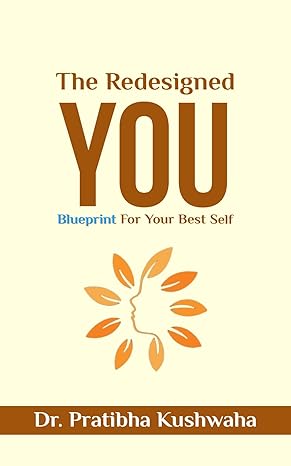In the vast landscape of human cognition, our minds operate on multiple levels, each playing a crucial role in shaping our thoughts, behaviors, and overall life experiences. Today, we delve deep into the fascinating world of consciousness, exploring the intricate relationship between our conscious and subconscious minds. By understanding these different levels of mind, we can unlock incredible potential for personal growth, healing, and success.
The Triad of Consciousness: Conscious, Subconscious, and Unconscious
Before we dive into the power of our subconscious mind, it’s essential to understand the three primary levels of consciousness:
- Conscious Mind: This is the part of our mind that we’re actively aware of and use for logical thinking, decision-making, and interacting with the world around us.
- Subconscious Mind: Often referred to as the preconscious, this level contains information that we can easily access when needed, such as memories, learned behaviors, and automatic responses.
- Unconscious Mind: The deepest level of our psyche, housing repressed memories, instincts, and primal urges that influence our behavior without our conscious awareness.
It’s important to note that while some psychologists differentiate between the subconscious and unconscious minds, for the purpose of this discussion, we’ll consider them as one entity, representing the 90% of our mental processes that occur below the surface of conscious awareness.
The Brain-Mind Distinction
Before delving further, it’s crucial to understand the difference between the brain and the mind. While often used interchangeably, these terms refer to distinct concepts:
- The brain is the physical organ in our skull, composed of neurons and other cells, responsible for processing information and controlling bodily functions.
- The mind is the non-physical realm of thoughts, feelings, memories, and consciousness that arises from the brain’s activity.
This distinction is important because while the brain is a tangible organ, the mind is an abstract concept that encompasses our subjective experiences and mental processes.
The 90/10 Rule of Mind
One of the most fascinating aspects of our mental landscape is the distribution of mental processes between our conscious and subconscious minds. Research suggests that a staggering 90% of our mental activity occurs at the subconscious level, while only 10% takes place in our conscious awareness.
This 90/10 split has profound implications for understanding human behavior and potential. Our subconscious mind is responsible for a vast array of crucial functions, including:
- Autonomic bodily processes (breathing, heart rate, digestion)
- Emotional responses
- Habitual behaviors
- Intuition and gut feelings
- Long-term memory storage and retrieval
- Creativity and problem-solving
Meanwhile, our conscious mind handles:
- Logical reasoning
- Short-term memory
- Voluntary actions
- Critical thinking and analysis
Understanding this distribution of mental processes can help us harness the immense power of our subconscious mind to effect positive changes in our lives.
The Horse and Rider Analogy
To better understand the relationship between our conscious and subconscious minds, let’s explore a powerful analogy often used by mentors and personal development experts: the horse and rider model.
Imagine your mind as a powerful horse (representing the subconscious) being guided by a rider (representing the conscious mind). This analogy illustrates several key points:
- Power Distribution: The horse (subconscious) is much larger and stronger than the rider (conscious mind), just as our subconscious processes are more extensive and influential than our conscious thoughts.
- Control and Direction: While the horse has the raw power, the rider provides direction and control. Similarly, our conscious mind can guide and influence our subconscious, even though it’s not directly in control of all our mental processes.
- Training and Harmony: A well-trained horse responds effortlessly to the rider’s cues, creating a harmonious partnership. Likewise, when we align our conscious intentions with our subconscious patterns, we can achieve remarkable results with seemingly little effort.
- Potential for Conflict: An untrained or rebellious horse may resist the rider’s guidance, leading to a struggle. Similarly, when our conscious goals conflict with deeply ingrained subconscious beliefs or habits, we may experience internal resistance and struggle to achieve our aims.
This analogy highlights the importance of training our subconscious mind to work in harmony with our conscious intentions, allowing us to harness its incredible power for personal growth and achievement.
The Iceberg Model of Consciousness
Another useful model for understanding the levels of mind is the iceberg analogy. Picture an iceberg floating in the ocean:
- The visible tip of the iceberg, representing about 10% of its total mass, corresponds to our conscious mind.
- The vast submerged portion, making up 90% of the iceberg’s mass, represents our subconscious (and unconscious) mind.
This model illustrates several important points:
- Hidden Influence: Just as the unseen part of the iceberg has a massive impact on the iceberg’s movement and stability, our subconscious mind exerts a profound influence on our thoughts, behaviors, and life outcomes.
- Depth of Information: The submerged portion of the iceberg contains a wealth of information and experiences, much like our subconscious mind stores vast amounts of data, memories, and learned behaviors.
- Interconnectedness: The visible and submerged portions of the iceberg are part of the same whole, just as our conscious and subconscious minds are interconnected aspects of our overall psyche.
- Potential for Discovery: By exploring beneath the surface, we can gain insights into the hidden aspects of our mind, uncovering limiting beliefs, untapped potential, and opportunities for growth.
Understanding this model can motivate us to delve deeper into our subconscious mind, exploring its contents and learning to harness its power for personal transformation.
Harnessing the Power of Your Subconscious Mind
Now that we understand the immense influence of our subconscious mind, how can we tap into its power to improve our lives? Here are some strategies:
- Positive Affirmations: Regularly repeating positive statements can help reprogram your subconscious mind, replacing limiting beliefs with empowering ones.
- Visualization: Vividly imagining your desired outcomes can imprint these goals onto your subconscious, making you more likely to recognize and act on opportunities to achieve them.
- Meditation and Mindfulness: These practices can help you become more aware of your subconscious thoughts and patterns, allowing you to consciously reshape them.
- Hypnosis and Self-Hypnosis: These techniques can help you access your subconscious mind more directly, facilitating rapid change in beliefs and behaviors.
- Emotional Freedom Technique (EFT): This method combines physical tapping on specific points with verbal affirmations to address subconscious blocks and negative emotions.
- Journaling: Writing can help you uncover subconscious patterns and beliefs, bringing them into conscious awareness where they can be examined and changed.
- Dream Analysis: Paying attention to your dreams can provide insights into your subconscious mind, revealing hidden fears, desires, and unresolved issues.
- Cognitive Behavioral Therapy (CBT): This therapeutic approach can help you identify and change negative thought patterns, many of which originate in the subconscious mind.
By consistently applying these techniques, you can begin to align your subconscious mind with your conscious goals, unleashing your full potential.
The Transformative Impact of Subconscious Reprogramming
When we successfully tap into and reprogram our subconscious mind, the results can be truly transformative. Here’s why:
- Effortless Change: Since the subconscious mind controls so much of our automatic behavior, changes at this level can lead to effortless shifts in our actions and habits.
- Deep-Rooted Transformation: Subconscious changes tend to be more profound and long-lasting than those made only at the conscious level.
- Holistic Impact: Because the subconscious mind influences so many aspects of our lives, changes here can have wide-ranging positive effects on our health, relationships, career, and overall well-being.
- Increased Resilience: A positively programmed subconscious mind can help us bounce back more quickly from setbacks and maintain a more optimistic outlook.
- Enhanced Creativity and Problem-Solving: By tapping into the vast resources of our subconscious mind, we can access innovative solutions and ideas that may not be apparent to our conscious mind.
- Improved Health: The subconscious mind plays a crucial role in many bodily functions, so positive reprogramming can potentially enhance our physical health and healing processes.
- Greater Self-Awareness: Working with our subconscious mind increases our overall self-awareness, leading to better decision-making and personal growth.
Overcoming Subconscious Obstacles
While the power of our subconscious mind is immense, it’s important to recognize that it can also hold us back. Many of our limiting beliefs, fears, and self-sabotaging behaviors originate in the subconscious mind. Common obstacles include:
- Negative Self-Talk: Internally critical or pessimistic dialogue that undermines our confidence and efforts.
- Limiting Beliefs: Deep-seated convictions about our capabilities or worthiness that hold us back from reaching our full potential.
- Fear of Failure or Success: Subconscious anxieties that can paralyze us and prevent us from taking action towards our goals.
- Unresolved Trauma: Past experiences that continue to influence our behavior and emotional responses in unhealthy ways.
- Inherited Beliefs: Perspectives and attitudes we’ve absorbed from our family, culture, or society that may not serve our best interests.
Recognizing these obstacles is the first step in overcoming them. By consciously working to identify and challenge these subconscious patterns, we can begin to rewire our minds for success and fulfillment.
The Journey of Self-Discovery
Exploring the levels of our mind is ultimately a journey of self-discovery. As we delve deeper into our subconscious, we uncover hidden aspects of ourselves, gaining insights that can lead to profound personal growth and transformation.
This journey requires patience, persistence, and self-compassion. It’s important to remember that our subconscious patterns often developed as coping mechanisms or protective strategies. As we work to change these patterns, we must approach ourselves with kindness and understanding.
Moreover, this exploration can be both exciting and challenging. You may uncover unexpected truths about yourself or face difficult emotions. It’s often helpful to work with a trained professional, such as a therapist or coach, who can guide you through this process safely and effectively.
Conclusion: Embracing the Power Within
As we’ve explored in this post, our minds are far more complex and powerful than we often realize. The subconscious mind, representing 90% of our mental activity, holds immense potential for transformation and growth.
By understanding the different levels of our mind and learning to harness the power of our subconscious, we can unlock new levels of achievement, happiness, and fulfillment. Whether through positive affirmations, visualization, meditation, or other techniques, we have the tools to reprogram our subconscious and align it with our conscious goals and desires.
Remember, this is a lifelong journey of discovery and growth. Each step you take to understand and work with your subconscious mind is a step towards a more empowered, authentic, and fulfilling life. Embrace the power within you, and watch as your world transforms in beautiful and unexpected ways.


1 thought on “The Power of Our Subconscious Mind: Exploring Levels of Consciousness”